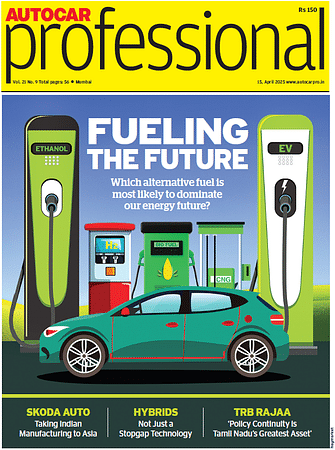'If some client does not want to go global with its platform, we will focus on the domestic program here.'
Amit Panday speaks to IAC’s president & CEO James K Kamsickas and Gajanan Gandhe, senior VP & ED, IAC Int’l Automotive India, on the sidelines of the launch of IAC's new Pune plant.
Amit Panday speaks to IAC’s president & CEO James K Kamsickas and Gajanan Gandhe, senior VP & ED, IAC Int’l Automotive India, on the sidelines of the launch of IAC's new Pune plant.
Going forward, what will be the larger focus of the operations at the Chakan facility? Will it be the domestic requirements or the offshore business?
James K Kamsickas: From an engineering design perspective, I hope it is offshore because we are talking about US$ 5.2 billion of sales. So, obviously, that much more of design and engineering is required around the world.
Gajanan Gandhe: James would want the global company to grow while I would focus on its growth in India. I am clearly looking at boosting IAC’s growth here so that I can feed our resources back into the global entity to fuel further growth.
When we talk about the nature of operations in India, we talk about cost pressures, reverse innovation and other aspects. Are there any learnings which IAC has taken from here and implemented in any of its global projects?
GG: Continuous improvement is one big distinguishing factor and James is largely responsible for creating that culture of continuous improvement. Whatever we learn here is fed into the global system.
Secondly, as regards sourcing of tooling, today a lot of tooling is sourced from China and Korea. Earlier for US-specific requirements, we would source the tooling from the US.
So we can say that learning is transferred, that we can also make the same tooling but at a lower costs. There are many more examples to highlight these points.
OEMs such as Ford, General Motors, Suzuki and others are working on a bunch of global platforms which seems to be the new-age scheme of executing engineering operations. Will IAC prioritise such projects going forward?
JKK: This may surprise you as an answer but we don’t focus specifically on the global programs. We don’t do that because we are in a business of making parts. If some client does not want to go global with its platform, we will focus on the domestic program here. We think that this (global programs) is the better play because essentially, as a supplier, you only launch it (product) once. All your lessons involved in the tooling, processes, controls and other areas happen just once and you push them to other markets. On the customer front, they get the same product with same benefits.
At IAC, we are on both the sides. We are watching hundreds of programs around the world. We are living in both the environments, so whatever they (OEMs) want, we will continue to do that.
Everybody is not going to go global (only develop global platforms) or vice-versa. It’s always going to be a mixed bag for OEM-centric strategies.
What trends do you anticipate in the coming times — do you see components going big on lightweighting initiatives, turning smaller or any other areas?
GG: If you talk only about the Indian market, besides lighter and smaller components, we see innovative solutions taking centrestage. The consumers are going to push the OEMs over what exactly they want.
On the aesthetics front, we see features like spacious and plush interiors and ambient lighting. While on the innovation front, we have acoustics and NVH- (noise-vibration-harshness) specific products which go inside the car to cut down the engine noise and vibration. Another similar product is the washable flooring, which eases the in-vehicle cleaning job.
JKK: We recently did a complete study for an OEM to understand the vehicle. Our findings made us develop acoustical products ranging from dash insulators, door insulators to wheel arch liners. We realised that you can do it right if you work upstream with your customer, the costs do not necessarily go up.
So I would say that I know cost and time issues are always there but you don’t always have to go and spend a bag of money to get what you want if you upstream with the right supplier, making the right choices.
RELATED ARTICLES
'India Can Become a Major Pillar for Us' - Marquardt Group
Björn Twiehaus, CEO of Marquardt Group, and Vishal Narvekar, the company's India GM, share their outlook on the Indian m...
Luxury Car Market to Slow in 2025: Mercedes-Benz Sees Flattish Numbers
In Jan to March of 2025, the market may witness its slowest growth since COVID-19, and if the weakness continues, the se...
‘We Must Have More Women Leaders in the Auto Sector:’ Anjali Rattan
The chairperson of the New Delhi-headquartered RattanIndia Enterprises believes that with their multi-tasking nature, wo...






 15 Mar 2014
15 Mar 2014
 7009 Views
7009 Views





 Darshan Nakhwa
Darshan Nakhwa


 Prerna Lidhoo
Prerna Lidhoo


